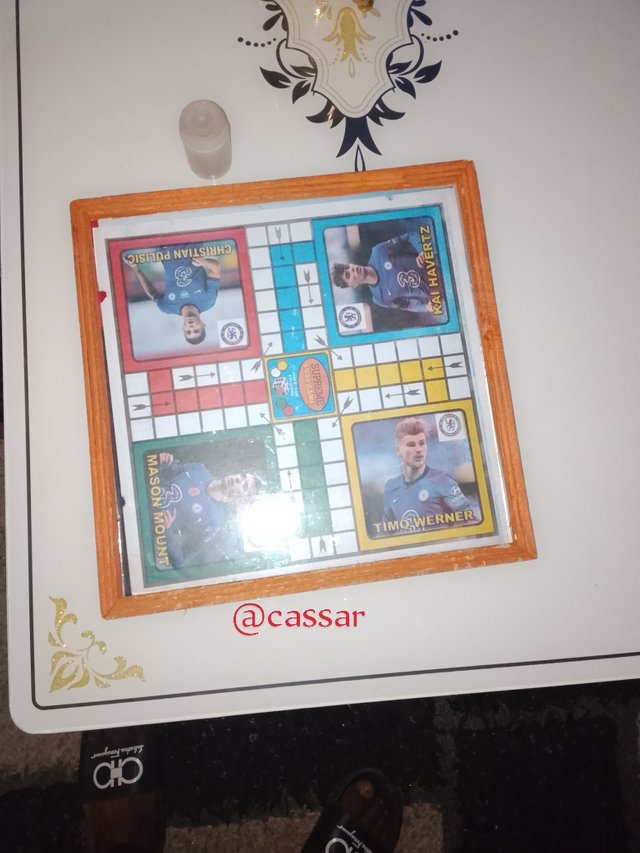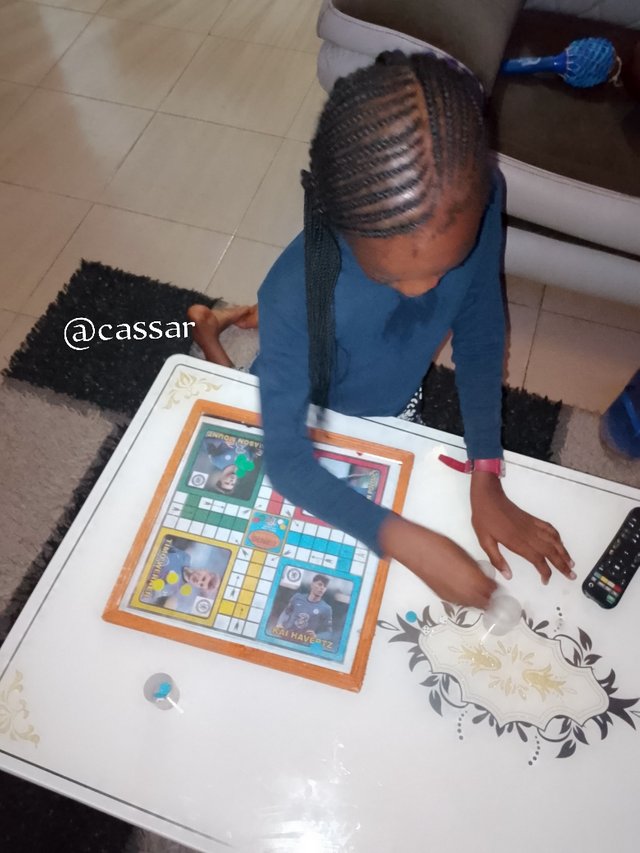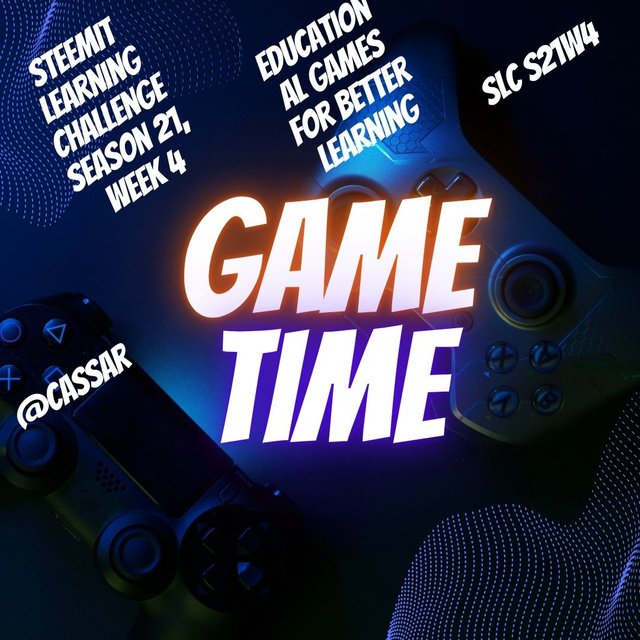SLC S21W4/ Educational games for better learning.
Educational game I created is called Ludo
- Using the Pre-Made Ludo Game: A Creative Process
- Adapting the Game for Learning:
Assign each hue or specific square educational tasks. For example: Red: arithmetic problems, such "What is 2+3? One example of broad knowledge is "Name one animal that lives in water." Yellow is associated with pleasurable physical activity, such "Clap your hands three times."
- Creating an Educational Dice:
Make a dice so that each colour or task has a challenge associated with it. For instance, name the dice's sides with Math, Spelling, and so on.
Rules Adaptation:
Before advancing their piece forward, players must respond to a question or do an activity related to the colour of their square.Preparation of Question Cards:
On little cards, write easy activities or questions for every category.
- Purpose of the Game
Through interactive play, the modified Ludo game seeks to teach basic maths, spelling, and general knowledge. Develop your ability to think critically, plan strategically, and solve problems. Encourage the development of social skills such as patience, healthy competition, and taking turns.
- How 1 Point is Played
- After rolling the dice, a player advances their token.
- They have to respond to a question or complete the job for that category if they land on a particular colour or square.
- They can remain on the square if they successfully finish the task; if they don't, they have to take a step back.
- Feedback and Learning Experience
- youngster's Reaction: The youngster thought the game was entertaining and captivating, particularly when responding to questions or finishing activities. The game became more rewarding and participatory as a result.
- Learning Contribution: The educational twist reinforced learning in a playful way by encouraging the kid to apply their knowledge and think critically.
- My Experience: I loved helping the youngster complete chores while watching them actively learn, and the game struck an exciting balance between enjoyment and instruction.
purpose of the educational game
- Creative Process for Making and Using an Educational Ludo Game
Step 1: Planning the Game
Select the educational focus, such as general knowledge, spelling, math, or social skills. Consider how to make Ludo's gameplay more educational. For instance, every coloured square or designated area on the board will stand for a learning task.
Step 2: Materials Needed
A dice and a pre-made Ludo board. Stickers or coloured markers (optional, for customisation). Tiny cards or pieces of paper with chores or enquiries on them. A box to hold the cards.
- Step 3: Customizing the Ludo Board
Assign responsibilities to zones: For instance, mark regions or squares with the labels "Math," "Spelling," "Fun Facts," and "Physical Activity." "-" Mark these areas on the board with stickers or markers to make them obvious.
Depictions: - Sketch basic symbols on the squares, such as a pencil for spelling and numbers for maths. "-" Use bright colours to appeal to kids between the ages of four and twelve.
Step 4: Preparing Question/Task Cards
- Create a set of questions/tasks for each category:
Spell the word 'computer.' is an example of a term that is easy to spell because computer is what we hear often and often.
- Fun Facts: Questions pertaining to general knowledge, such as "What colour is the sky?" Engage in enjoyable
- physical activities, such as "Hop on one foot five times." Sort the questions and tasks by category after writing them on a little card.
- Step 5: Gameplay Adaptation
- Include a rule: A player choose a card and answers the question or completes the job when they land on a square in a designated zone. They remain on the square if they are successful; if not, they take a step back.
- For instance: In the first illustration, the player falls on a red square that reads "Math." They solve the problem after selecting a maths card. The player moves out of home base, rolls a six, and choose a challenge card if they land in a task zone (Illustration 2).
- Step 6: Playing the Game
Assemble participants and go over the rules. Make sure the child comprehends the connection between the game and the educational assignments. - Launch the game and keep an eye on gameplay to promote enjoyment and learning.
- Illustrations
Ludo Board:
-1 An image of the Ludo board with task-specific colour-coded squares.
- Task Cards: - Create cards with examples such as "Spell 'dog'" or "2+2?" 3.
Gameplay Scene: - A straightforward illustration of players selecting task cards and moving pieces.
Purpose of the Educational Ludo Game
The educational Ludo game's objective is to create an engaging pastime for kids ages 4 to 12 by fusing fun and learning. The game seeks to instruct:
Basic Math Skills - When players land on particular squares, they complete basic addition, subtraction, or multiplication problems, strengthening arithmetic principles.
Vocabulary & Spelling: - By trying the spelling of simple words, the game players improve their language skills and improve their vocabulary.
The child's horizons are expanded by the entertaining facts and trivia questions that expose them to new information about the world.
Social and Emotional Skills - The game promotes these vital life skills: taking turns, patience, and teamwork.
Physical Activity: The game integrates movement through tasks like hopping or clapping, which makes it vibrant and participatory.
- What Do You Want to Teach?
The purpose of the educational Ludo game is to: - Develop the child's problem-solving skills and critical thinking. Encourage a passion of studying by putting educational assignments in an engaging way. Develop confidence to take on problems and respond to enquiries.
By integrating education into play, the game transforms a traditional pastime into a powerful teaching tool that nurtures the child’s cognitive, social, and emotional growth.
The game turns a traditional hobby into an effective teaching tool that fosters a child's cognitive, social, and emotional development by fusing education with play.
- Feedback and Experience with the Educational Ludo Game
Did the Child Like the Game?
The kid adored the game, indeed! It was entertaining and captivating because to the vibrant colours, dynamic difficulties, and well-known Ludo framework. Their focus was maintained throughout the session by the combination of moving pieces, rolling dice, and finishing tasks.
- Was the Child Bored or Entertained?
It was obvious that the child was entertained and excited. They took pleasure in completing the educational tasks, particularly when they correctly answered and saw their pieces advance towards victory. The chores involving physical exertion broke up the monotony of sitting stationary and added an additional layer of excitement and laughter.

- Did the Game Contribute to the Child’s Learning?
Of course. Play was seamlessly integrated with learning through the game's subtle integration:
- Math: The child's confidence increased as they studied addition and subtraction with ease.
- Spelling: They expanded their vocabulary and picked up new terms.
- General Knowledge: They were intrigued by the interesting information that were presented in the trivia questions.
- Social Skills: As they played with others, the game helped them practise patience and taking turns.
- My Experience with the Game
For me, playing the game was a rewarding and pleasurable experience. Seeing the child actively study while having fun was satisfying. A supportive, engaging atmosphere was produced by assisting them with the assignments and acknowledging their accomplishments.

- The Child’s Experience
The child enjoyed the supporting yet competitive environment and felt empowered when they provided accurate answers to questions. They were so involved and enthusiastic that they even wanted to play another round.
The educational Ludo game effectively blended enjoyment and instruction, making it a useful teaching tool for kids ages 4 to 12. It improved the child's emotional, social, and cognitive abilities in addition to providing entertainment. This event reaffirmed how crucial it is to incorporate play into instruction in order to promote effective learning.
Conclusion:
Educational Games for Better Learning
A child's learning experience can be improved with the help of entertaining and useful educational games. These games provide memorable and pleasurable learning experiences by fusing entertaining and interactive aspects with instructional information. They encourage kids to explore new ideas in a stress-free setting while fostering social skills, critical thinking, and problem-solving abilities.
Children who actively participate learn more effectively and acquire critical abilities like patience, cooperation, and strategic planning. Additionally, educational games accommodate multiple learning styles, which makes them inclusive and flexible for a range of age groups.
Children are encouraged to explore, ask questions, and develop when educational games are incorporated into teaching strategies. They are an effective instrument that unites teaching and pleasure, guaranteeing improved learning results and a passion for learning that lasts a lifetime.
